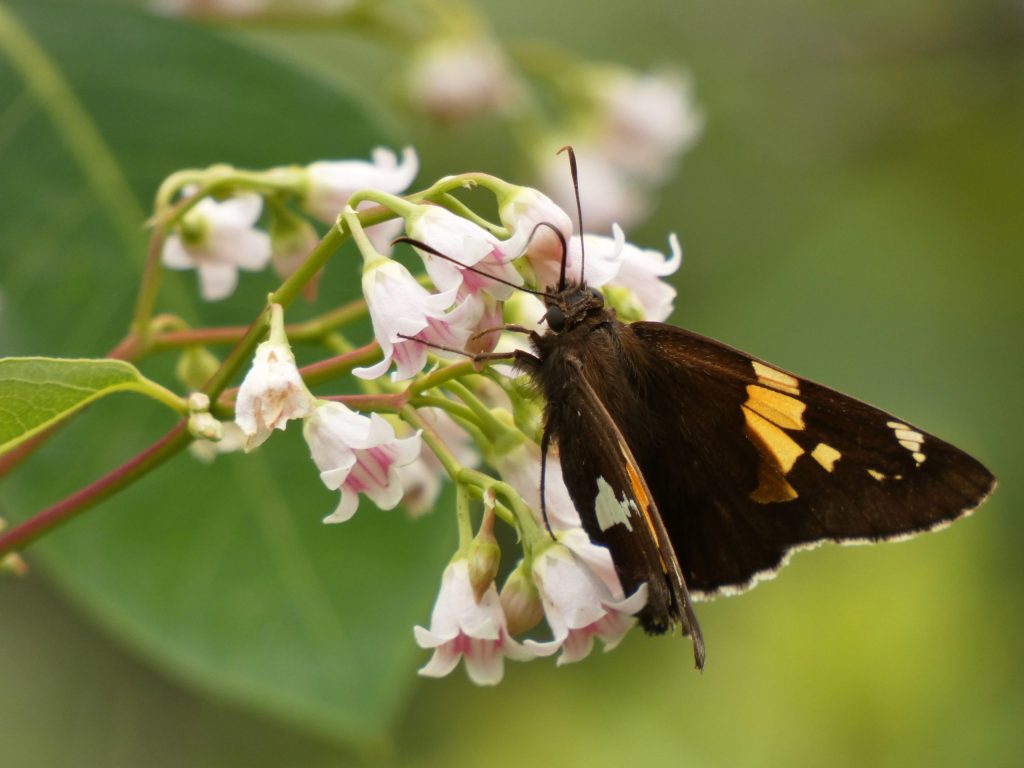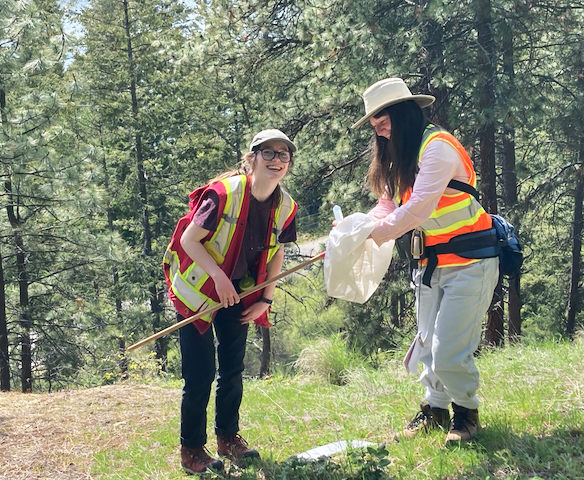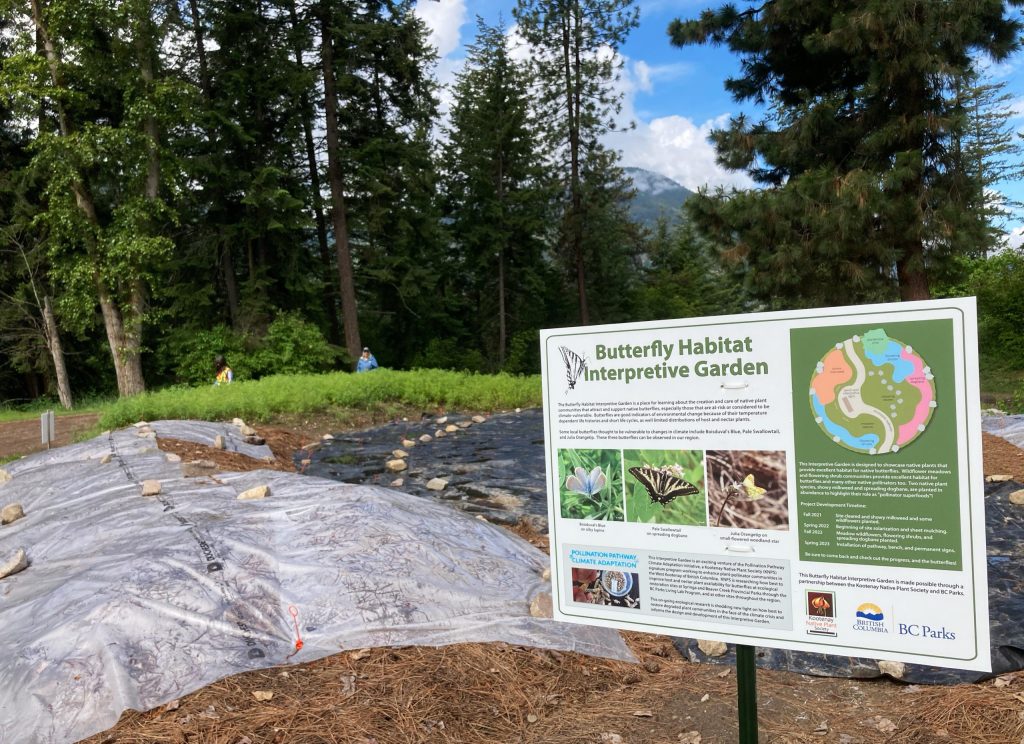Bolstering Butterfly Habitat in the West Kootenay region of BC Parks
Categories:
Lead Researcher: Brenda Beckwith (Plant Ecology)
Additional Research Team: Janice Arndt (Lepidoptera), Valerie Huff (Restoration Botany)
‘Building Climate Resilient Butterfly Habitat’ is a three-year project with the Kootenay Native Plant Society, Selkirk College and BC Parks. This project is part of the Pollination Pathway Climate Adaptation Initiative, a program of the Kootenay Native Plant Society.
In this project, we’re studying the relationships among native plants and butterflies, especially those butterflies that are rare or could be vulnerable to climate change. Our goal is to determine how to best establish meadow habitat that will support butterflies and their larva host food plants. We started in 2021 with our three research sites: Syringa and Beaver Creek Provincial Parks and Charbonneau Creek Conservation Area, as a reference site because of its greater biodiversity. The sites are known to support herbaceous plant (non-forested) communities and native pollinators including butterflies, moths, and skippers.
The main research methods included a timed “Pollard Walk,” the recording of butterfly observations while walking a path though the research site. Butterfly surveys occurred only on relatively calm days that were mostly sunny and warm, starting usually at 10:00 am. Surveys of plant phenology, or the timing of plant development though the growing season, were conducted over similar pathways. Both butterfly and plant monitoring occurred every two to three weeks from April to September.
In 2021, we found that the West Kootenay region has a high diversity of plants and butterflies, as well as non-forested ecosystems. Forty-nine butterfly species, including two rare butterflies, the Silver-spotted Skipper and Variegated Fritillary, were recorded. Of the 141 observations of butterflies feeding, called nectaring, on flowering plants, we found that butterflies preferred certain native plants, such as asters, Spreading dogbane, and Brown-eyed susan. Butterflies laid eggs on both native (pine, snowbrush, Silky lupine) and non-native (vetch, Sheep sorrel) plants.
One hundred and sixty plant species, including a rare plant called Pursh’s wallflower, were identified and surveyed. Most plant species flower in June and July. We observed that plants responded to the severe heat and drought, and likely wildfire smoke, in the summer of 2021 by producing flowers early, or for shorter periods of time, and by dying back early.
In 2022, we are continuing our surveys and data collection on plant abundance and floral density at Syringa and Beaver Creek Provincial Parks. Information from these surveys, as well as from Pollination Pathway climate research, will inform our ecological restoration activities within the parks, such as seeding plots with appropriate native plants collected within the region. The selected native plants will support the butterflies known to occur on site from our research. Then, these host and nectar plants will be monitored for use by butterflies. We will also conduct site management activities, as needed, to encourage native plant establishment and decrease cover of non-native plants.
An exciting additional part to this project is the development of an interpretive site at Syringa Park. Site preparation began in Fall 2021 with the planting of milkweed and other native plant seeds. In 2022, we have continued with more site preparation and the rest of the planting will occur in the fall. Next year we hope to see the addition of a pathway, permanent educational signs, and a bench.
This project was funded in part by the BC Parks Living Lab Program. The Program’s mission is to encourage climate change research, in protected areas in BC’s natural world, that guides protected area management for an uncertain future.
For more information about the BC Parks Living Lab Program, visit http://www.env.gov.bc.ca/bcparks/partnerships/living-labs/.







